Welcome to another issue of The Newport Cornucopia where we dig through the newspapers archives for interesting news articles and adverts. All articles are posted verbatim and most headlines are original (headlines in quotes are my own).

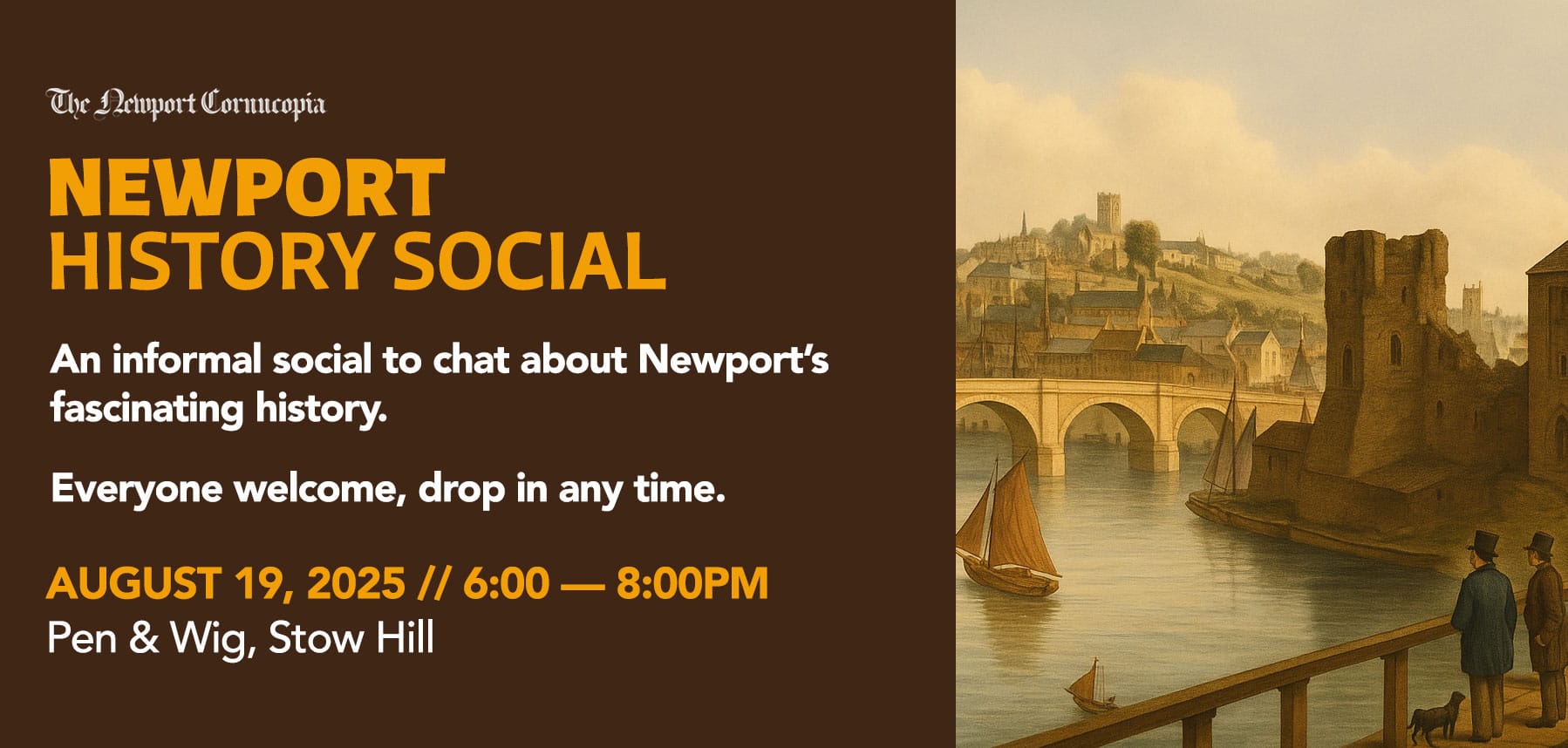

'Where Was the Cow Inn and Taven?'
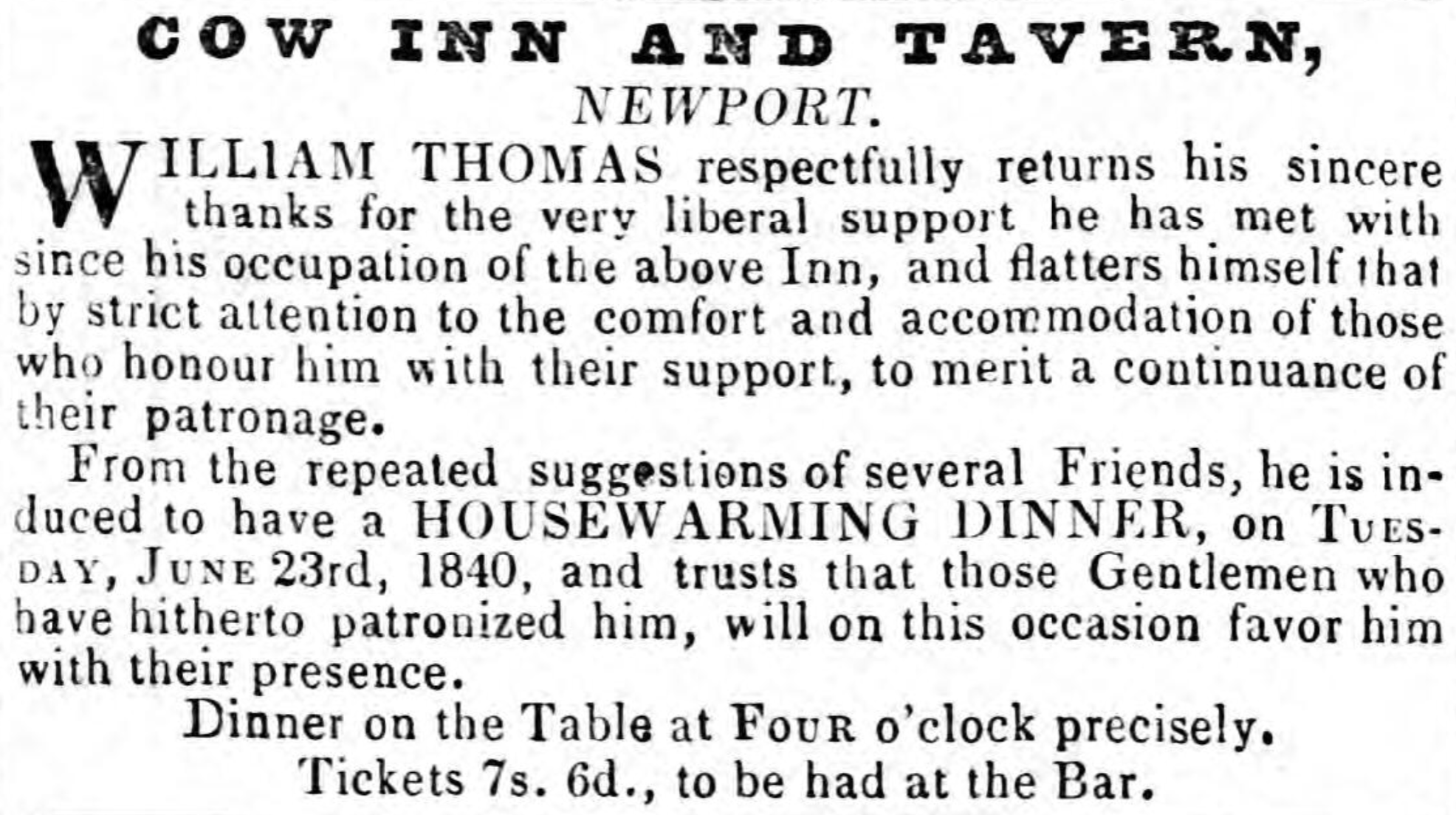

W.S. Woodin's Olio of Oddities
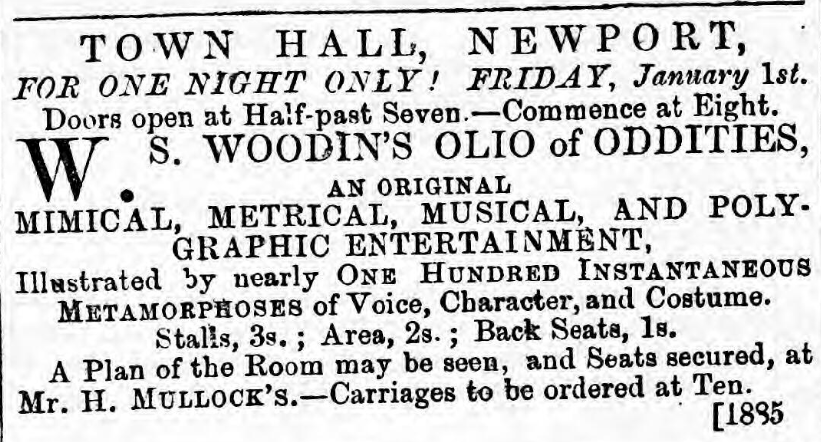
W.S. Woodin performed his 'Olio of Oddities' on a couple of occasions in Newport visiting the Town Hall in 1857 and 1859. The show was described as...
An Original Mimical, Metrical, Musical and Polygraphic Entertainment, illustrated by nearly One Hundred Instantaneous Metamorphoses of Voice, Character and Costume.
This book published by W.S. Woodin in 1855 gives an idea of what the show may have been like.
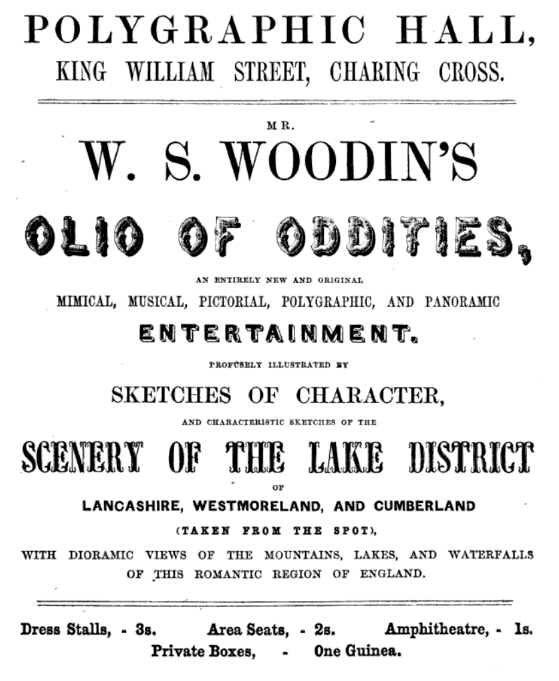
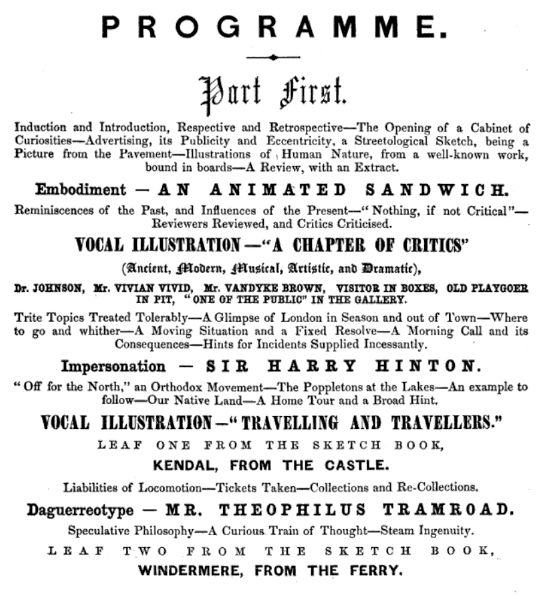
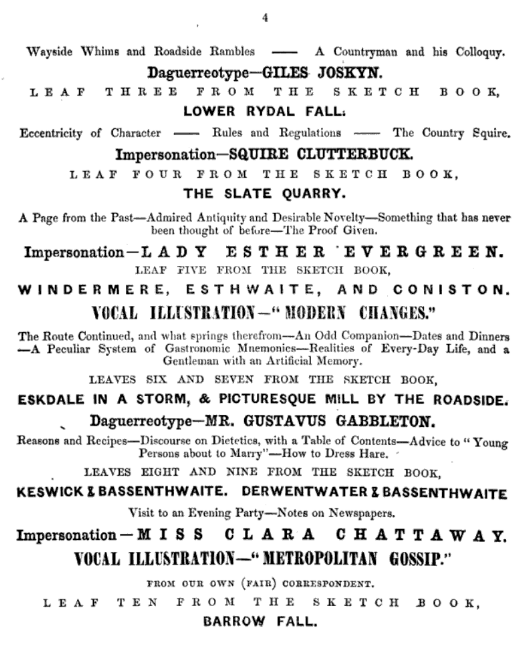
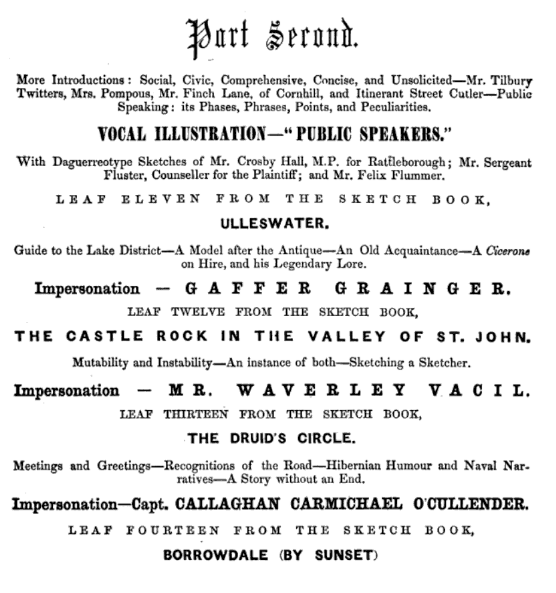
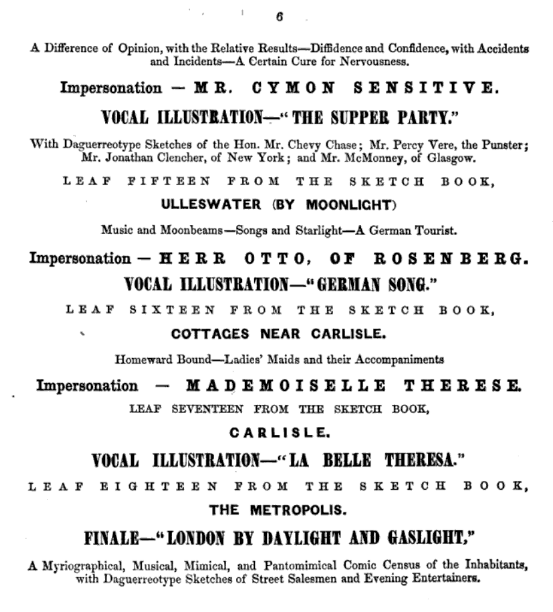
Source: Google Books
'Review from the Monmouthshire Merlin'
This popular entertainment will be given by Mr. W. S. Woodin, at the Town Hall, on Friday evening in next week and doubtless such an universal favourite will be received by a large audience.
His present tour of this part of the country has been most successful, and his Olio has fully equalled his previous efforts to amuse and please the public. The introductory character is an impersonation of Dr. Johnson, the literary magnate of the last century, whose peculiarities are portrayed in a manner which Woodin has almost made his own. Then in the others which succeed, we may see him as the critic, the censor of modern paintings the foppish puppy in the boxes of a metropolitan theatre, discussing, with a sentimental drawl, the exquisite being in muslin who sits opposite the crusty old playgoer, who regrets the palmy days of the drama, and next a "god" determined to have for his money its full value.
In the succeeding fifteen minutes, he changes his character no less than thirty times, while his visage undergoes almost equal transformation and still more striking are his impersonations from the fact of their not being confined to one sex, bat both are represented or ridiculed with, equal facility. Whether it be the trembling old gentleman filled with anxiety concerning the starting train, the lisping bride, the lady attached to bygone fashions and customs, the coquette, or the "honourable bore" in the House of Commons, Mr. Woodin is perfectly happy, and his audience must frequently have the powers of belief severely taxed to regard all these as one and the same person.
To go through all the characters produced in the "Olio of Oddities" would be of no utility, the efforts and talents of the artiste being here sufficiently indicated but the comic sketches of the inhabitants of the metropolis of various grades, ought not to be passed over, which are introduced with various songs. We think enough has been said, however, to induce a visit to the entertainment.
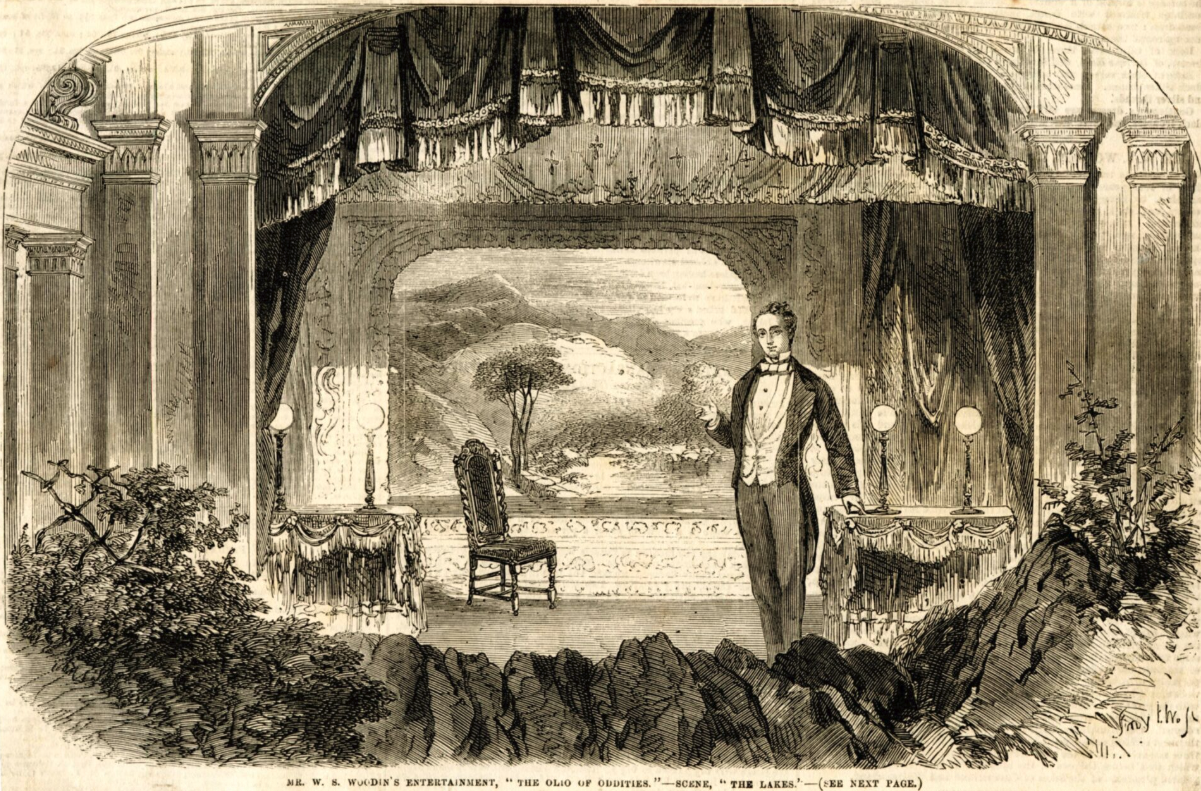
As to Mr. Woodin's career, it may be mentioned that his first attempts at artistic description of men and women were carried on behind an easel, where he was employed in sketching humanity as it stood, or sat, guided by the stern teaching of a venerable parent, who had a wish to bring his son up as au artist.
Finding the plan would not do, the father gave the youth his own way, and the polygraphist went to the Marionette Theatre with his Carpet Bag of persons and peculiarities. This speculation was not long unnoticed, and the entertainment became so popular that it was given for three years successfully in London and the provinces. Woodin next visited the lakes in the north, from which he carried back a whole bundle of characters for a new entertainment at the King William-street Rooms, Charing-cross, which he decorated at some expense, and re-christened the "Polygraphic Hall."
— Monmouthshire Merlin, 22nd October, 1859

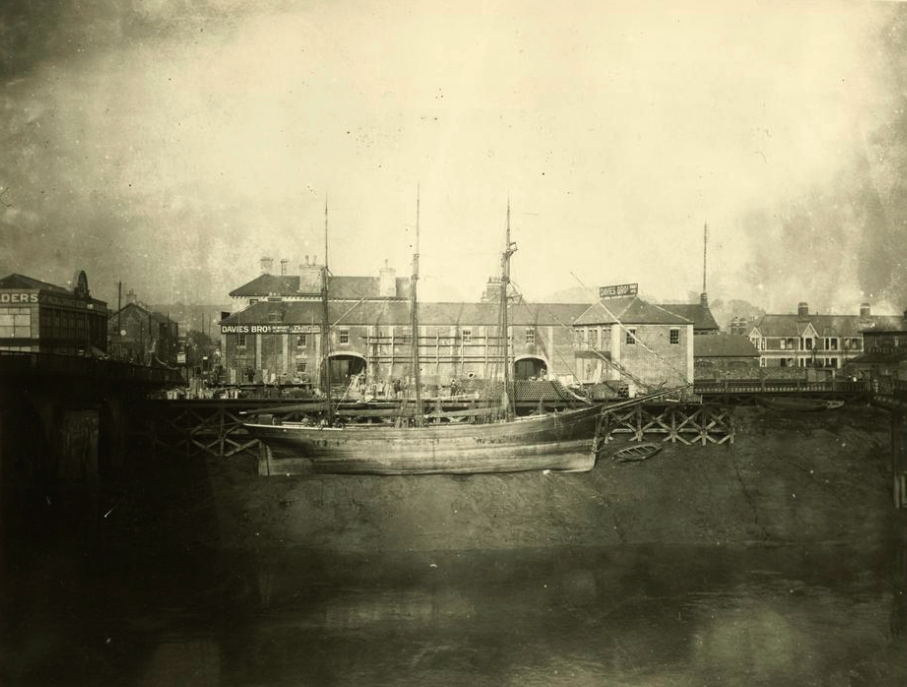

'Storm in 1742 Damages Sea Wall'


'What's On at the Cinema in 1913?'
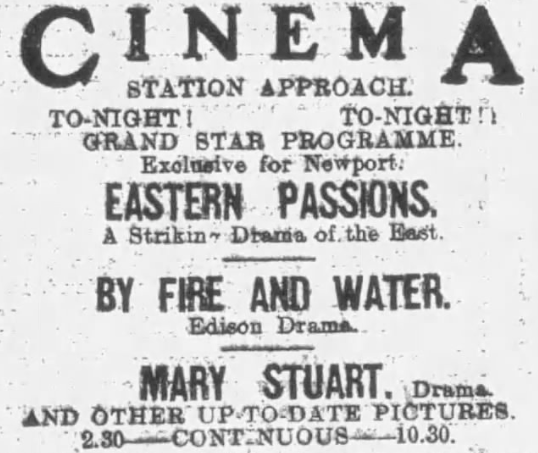
Showing at the cinema in Newport in 1913 was a silent Edison drama in which Richard Garvie, a prosperous young boatman, rescues his wife and son from a rival’s burning vessel after she spurns his shabby boat, leading to their reconciliation. Below is the full film that would have been shown.



'The Bachelors of Newport'
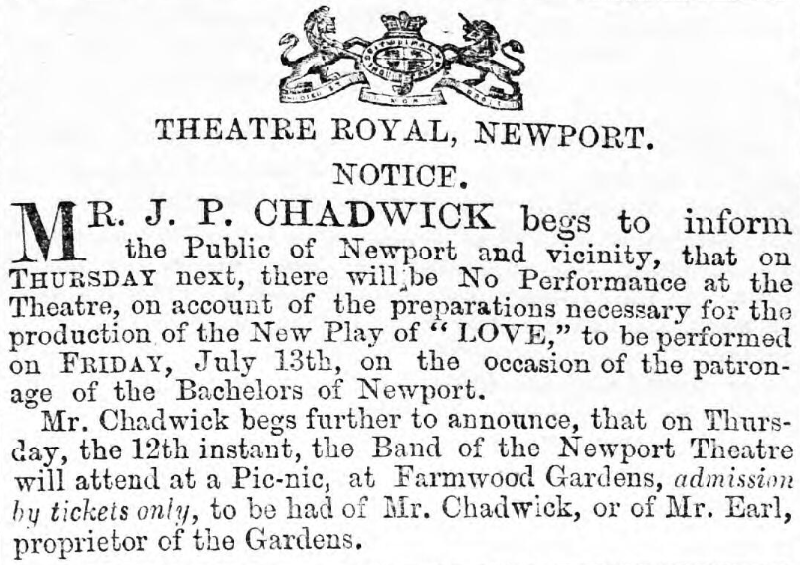
In 1855 there's a mention in an advert for the Theatre Royal, Newport for the Bachelors of Newport who were performing a play called "Love". Can't find much about the Bachelors but there's a mention of an annual Bachelor's of Newport Ball in 1882 but not sure if it's the same group.
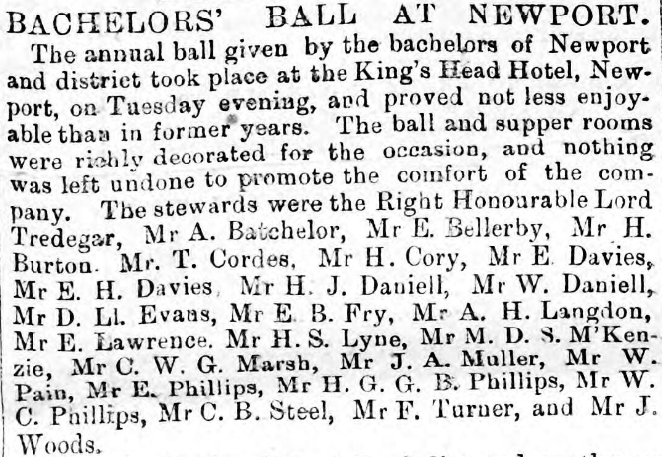
In the 1855 advert there's also a mention of the Band of the Newport Theatre playing in Farmwood Gardens which was in Lawrence Hill area just off Chepstow Road.
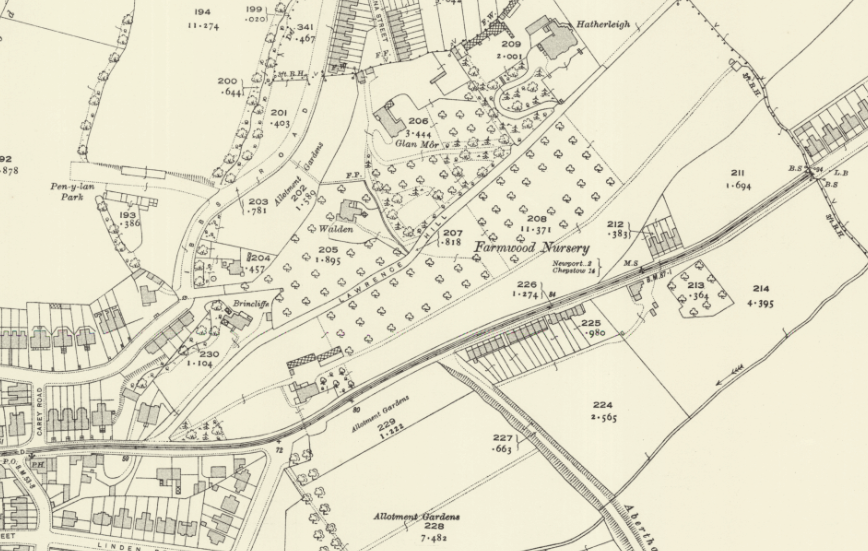
At the event at the park, Mr and Mrs Chadwick (owners of the Theatre Royal) entertained their staff at a picnic at the gardens. Below is a short report from the event.
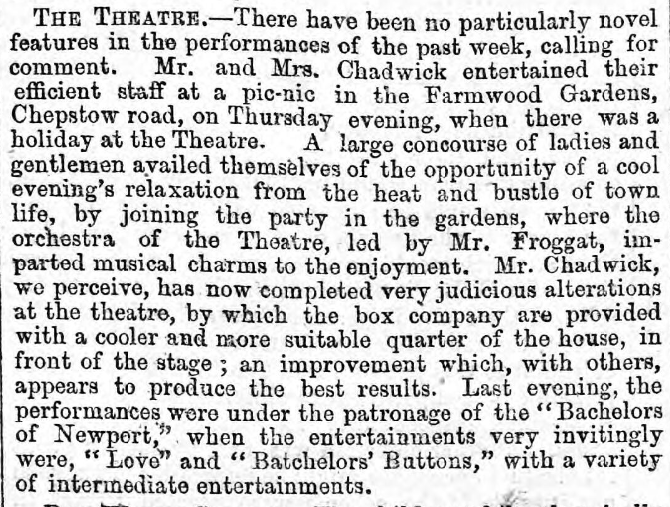


Laughing at the Powers that Be
William Williams, labourer, working at Pontymister foundry, who did not appear, was charged with being drunk and disorderly at Pontymister. He was turned out of a public-house, when he was very noisy on the turnpike road.
P.C. Seys said the defendant's character was bad. He saw defendant working at the foundry that morning, and he and the other men made a "regular laughing stock" of witness. He was fined 20s. and costs last month for similar conduct. The Bench now fined him 30s. and costs.
— Monmouthshire Merlin, 11th August, 1876
'Too Drunk to Remember What They Were Fighting About'
John Smith and James Brown, foreign sailors, were charged with being drunk and disorderly by fighting in Commercial-road, on Saturday night. They pleaded they were too drunk to remember what they were fighting about. Fined 16s. 6d. each in default 14 days.
— Monmouthshire Merlin, 11th August, 1876
'Selling Beer at 15 Minutes to 11'
William Meyrick was charged with permitting beer to be sold and consumed in his beer-house, at 15 minutes to 11, on the 30th of May. Fined 40s. and costs.
— Monmouthshire Merlin, 6th June, 1840
'Selling Beer at 20 Minutes Past 10am'
Walter William Price was charged with allowing beer to be sold and consumed in his house at 20 minutes past 10 on the forenoon of Sunday the 26th of April, contrary to the statute. Mr. PhilIpotts appeared for defendant. The offence was proved, and Price fined 40s. and costs.
John Lewis, charged with the same offence, was convicted in the same penalty. Wm. Holder was also summoned on a beer-house information, and fined 40s. and costs.
— Monmouthshire Merlin, 6th June, 1840
'Selling Beer at 20 Minutes to 12'
Thomas Hopkins was charged with allowing beer to be sold and consumed in his beer-house, at 20 minutes to 12, on the 26th of April. Mr. Clarke appeared for the defendant. Evidence having been heard, Hopkins was convicted in the penalty of 40s. and costs.
— Monmouthshire Merlin, 6th June, 1840

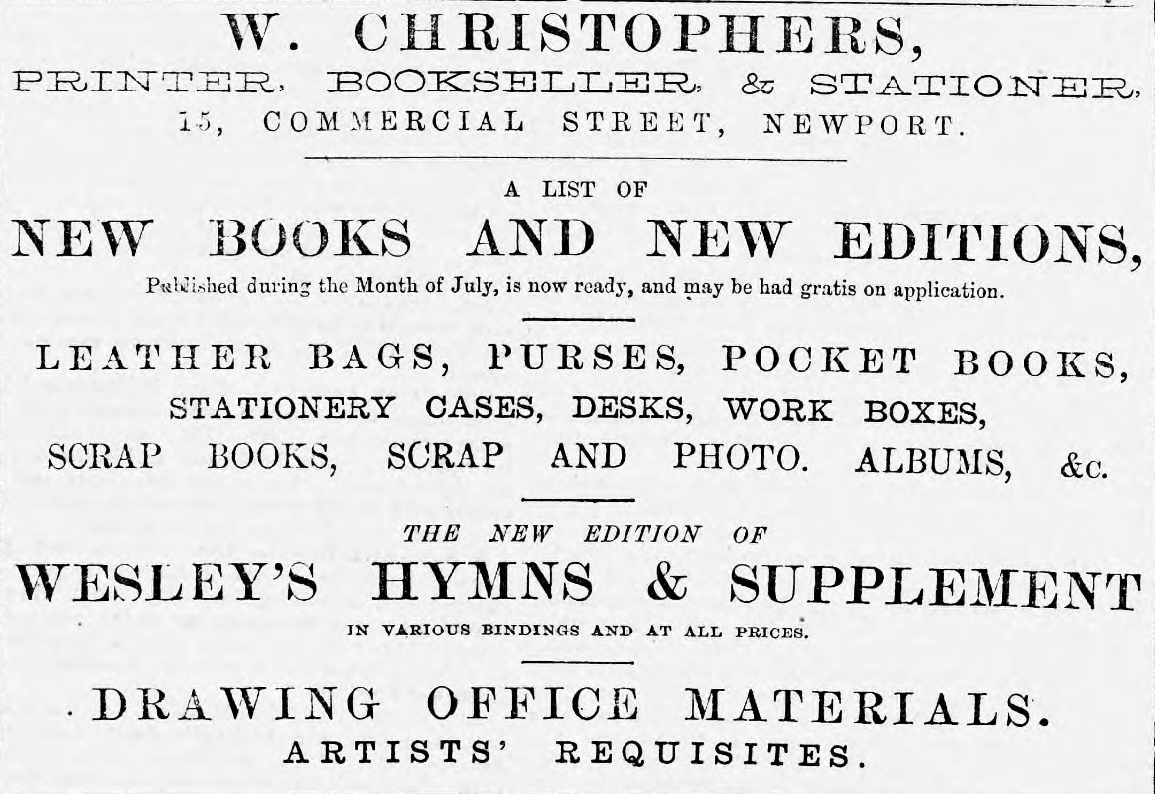

Houses for Sale On Godfrey Road
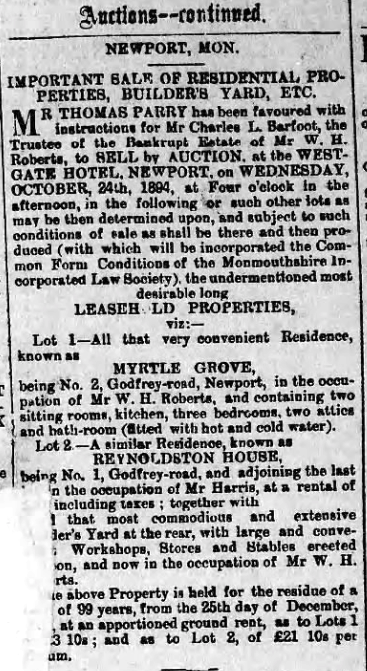
When encountering an advert for houses, it's interesting to see if they still exist today. The advert from 1894 lists No. 1 and No. 2 Godfrey Road being known as Reynoldston House and Myrtle Grove respectively.
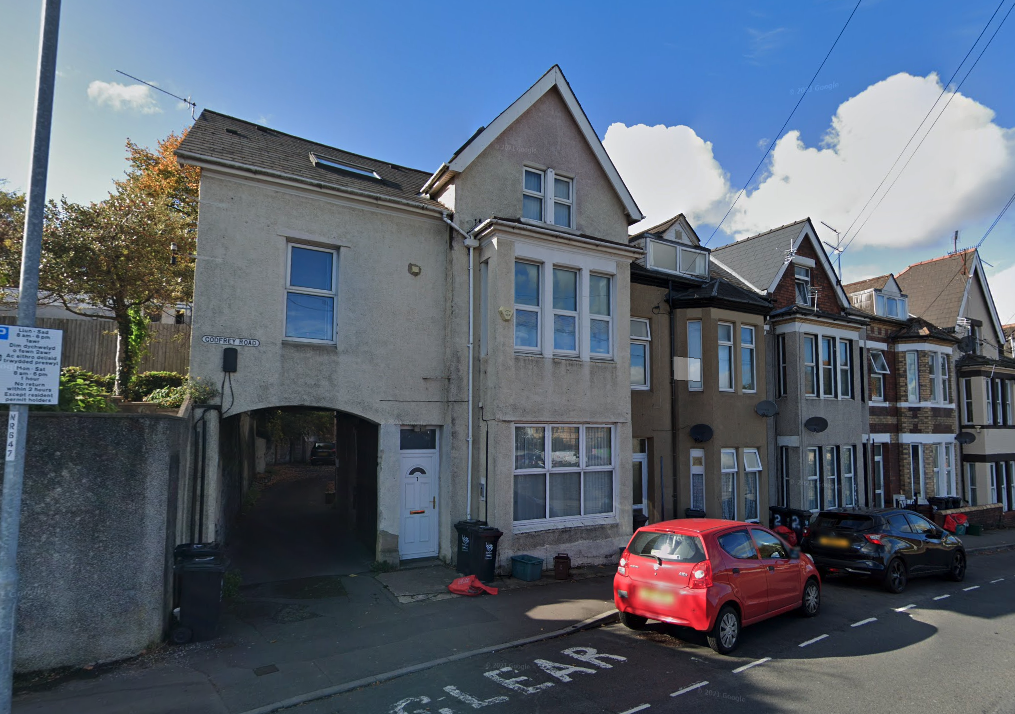
— South Wales Weekly Argus and Monmouthshire Advertiser, 20 October 1894

'Sneaking in Tobacco from the Continent'
Two well-known Newportonians have arrived from the Continent, where they have been spending their holidays. Being smokers they invested in a quantity of the fragrant weed, and all went well until they were face to face with the Customs officer. Having asked them to show him what they had one of them produced some cigars and scent, and said “That is all.”
The officer became suspicious, and no doubt his piercing eye caused the gentleman to whom he was addressing to produce six more cigars. The officer then invited him into the searching room and satisfied himself that there was no chance for him to charge duty.
The other gentleman avoided the searching operations by 4s in duty. This, it has been wickedly suggested, was about half the sum he really ought to have paid. The gentleman had gone to the trouble of having the tobacco mangled and made into a pad in order that he might escape the vigilance of the C.O.’s.
— South Wales Argus, 28th September, 1895

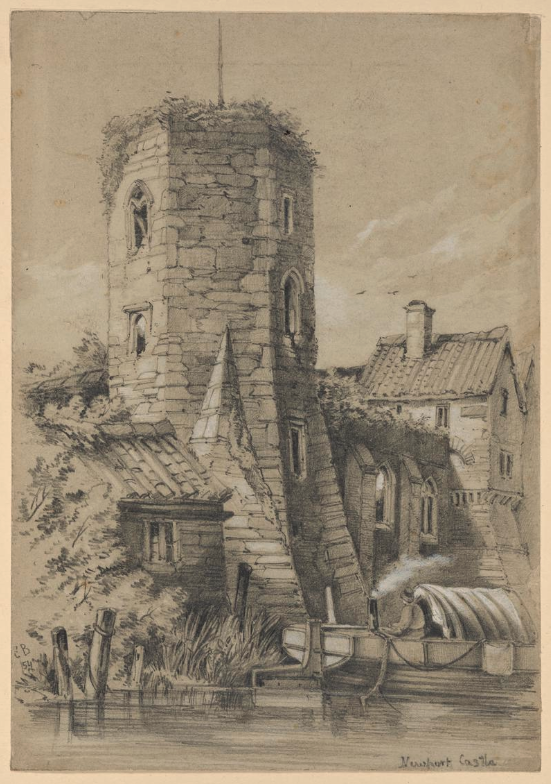

'Houses For Sale in 1840'
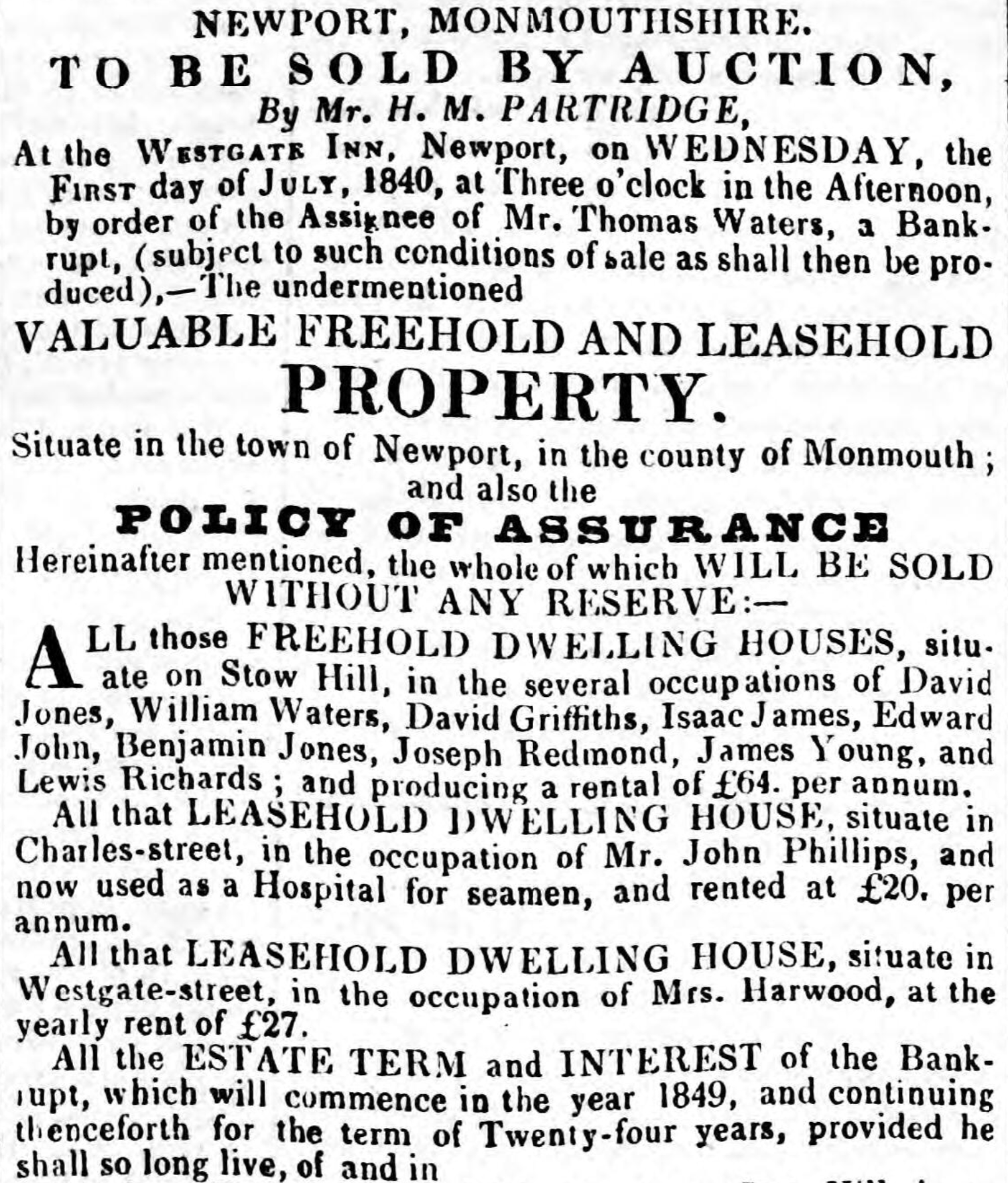
At the Westgate Inn on July 1st, 1840, a number of houses in the area were up for sale including a house on Charles Street used as a Seamen's Hospital which had been established a few years earlier in 1836/7.

Also mentioned were two courts — Wedlake's Court and Water's Court which were both off Stow Hill, according to the advert. In 1850, the Clark report described Wedlake's Court as such:-
"Here are 14 houses, 11 of them have no ventilation; are inhabited by low Irish, low in position, filthy, and unhealthy. The drain is covered with loose flags [paving slabs] and a board, and has not sufficient fall. The privies also are filthy. The lower part of these houses are not fit for people to live in. Before the Sanitary Board came into operation this was one of the worst courts. In the middle of the court there was a large ashpit into which all the house refuse was thrown, and this was built up against two privies, the contents of which flowed into the ashpit, and so impregnated the atmosphere, that it was most unpleasant for a person not accustomed to the court to enter it.
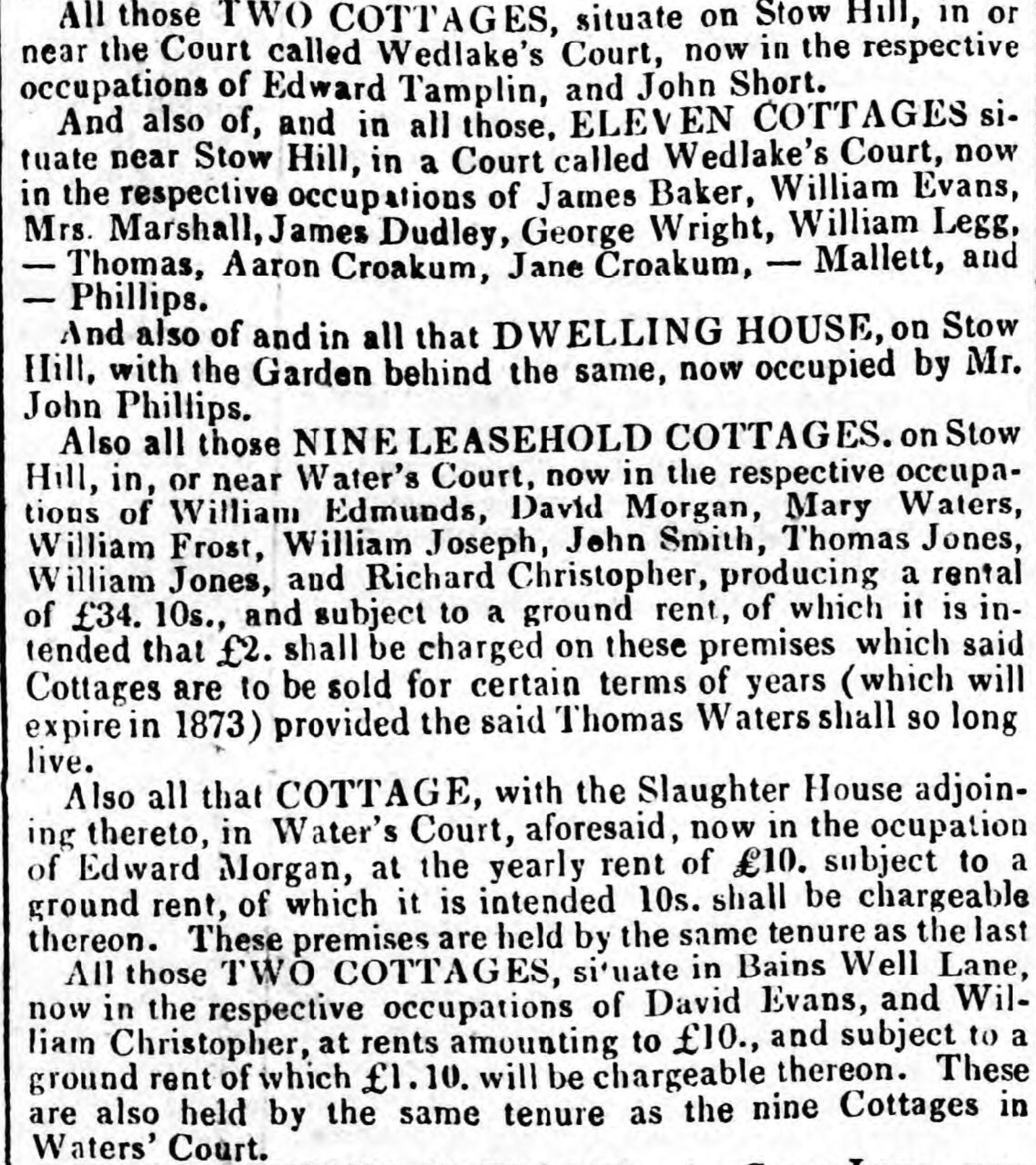
Baneswell Lane (spelled Bains Well in the advert) could be the road below which is today's North Street. Baneswell Road still exists in the same location so the wondering if the lane ran up to Havelock Street, which also wouldn't have been there at the time.
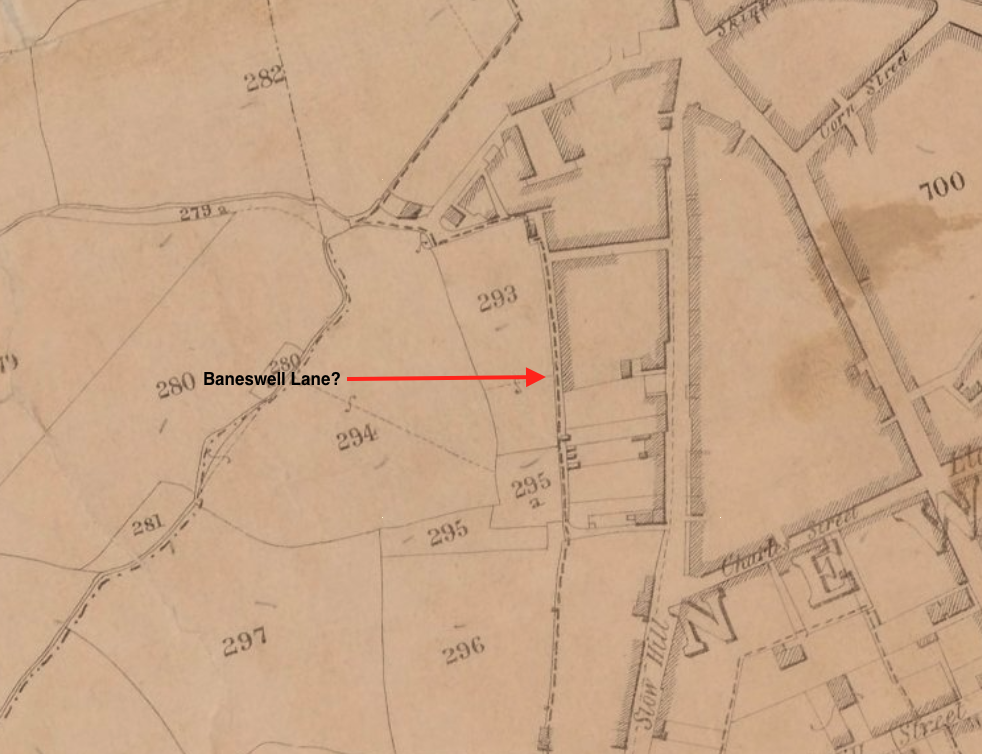
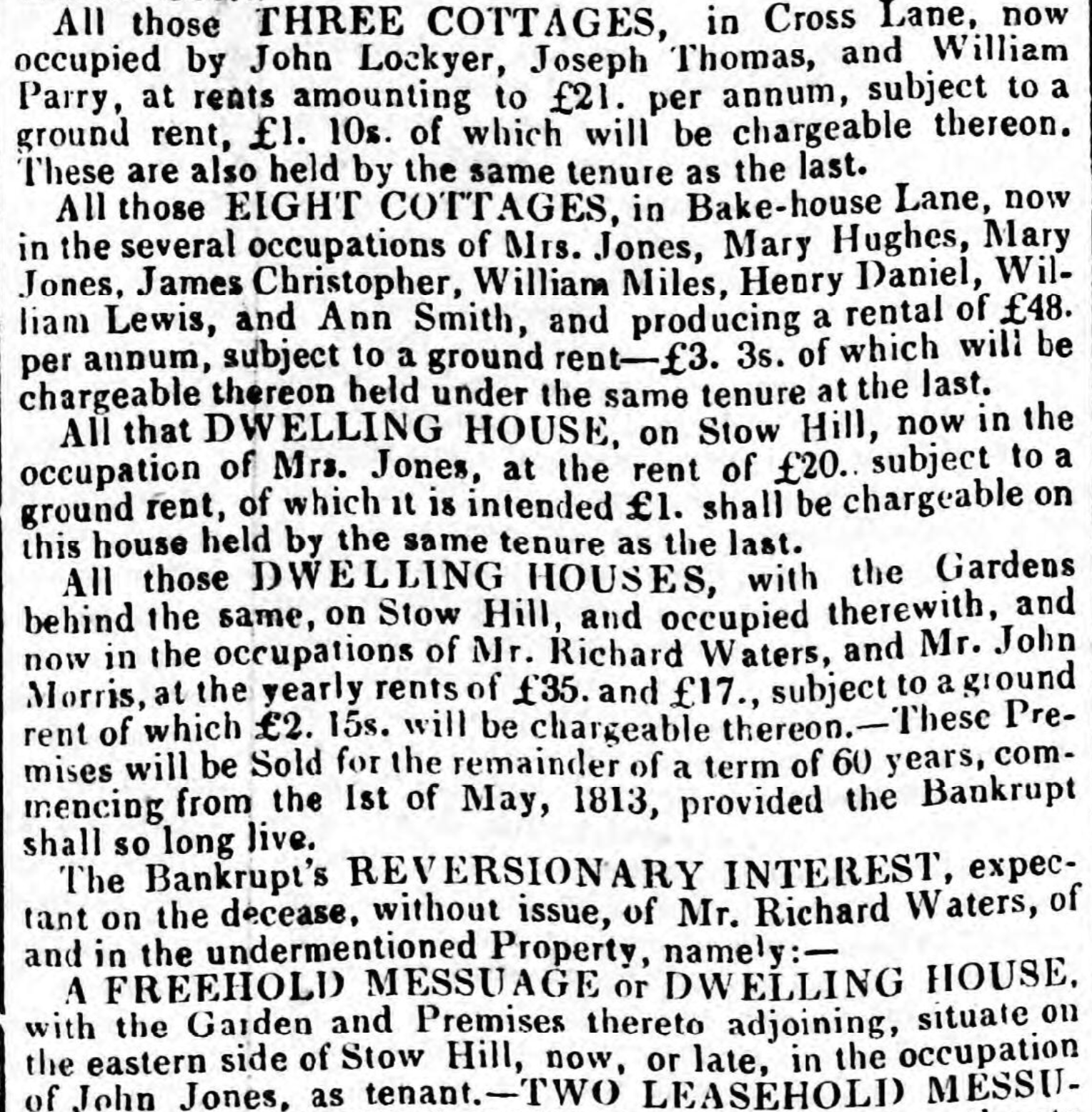
Bake-house Lane is mentioned further on in the advert and the map below from 1845 shows where it was located.
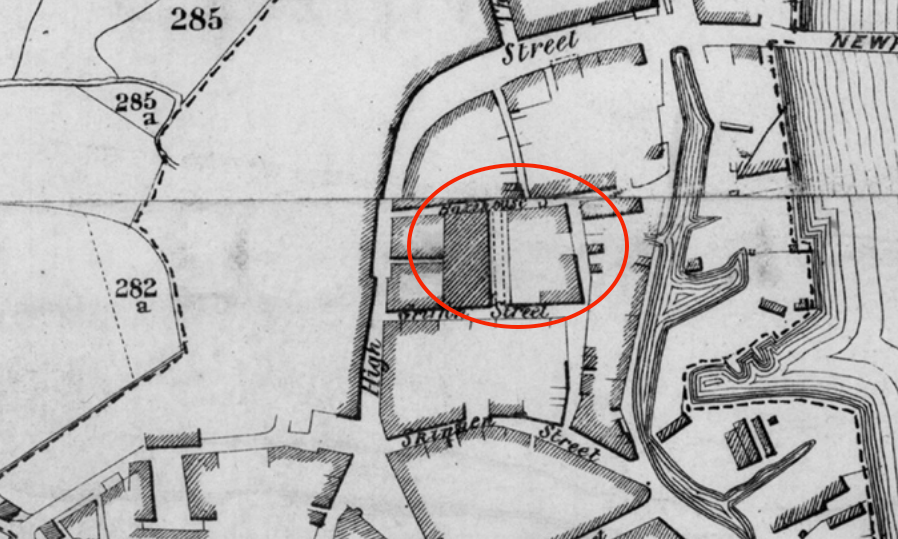

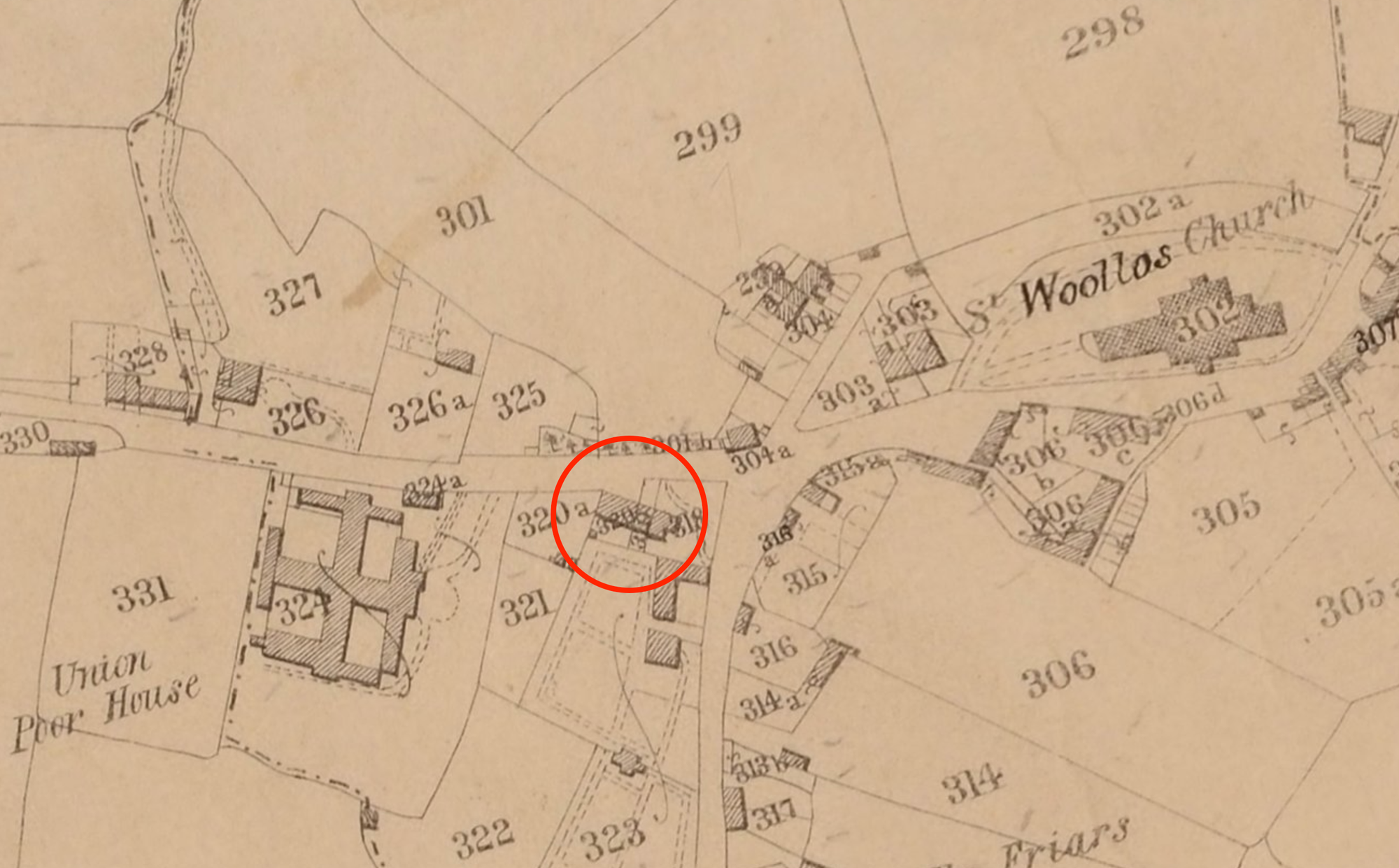
— Monmouthshire Merlin, 20th June, 1840

'The Speed of the Omnibus on Stow Hill'
The Stow-hill route of ‘buses has not proved the success expected. From to-day (Saturday), the lessees will only run one ‘bus every 40 minutes — the time originally fixed. There can be no doubt that the steepness of the hill is the cause of this.
The average individual can walk up the hill much quicker than the ‘bus can take him; and the expense of three horses to each ‘bus is very great.
— South Wales Argus, 28th September, 1895





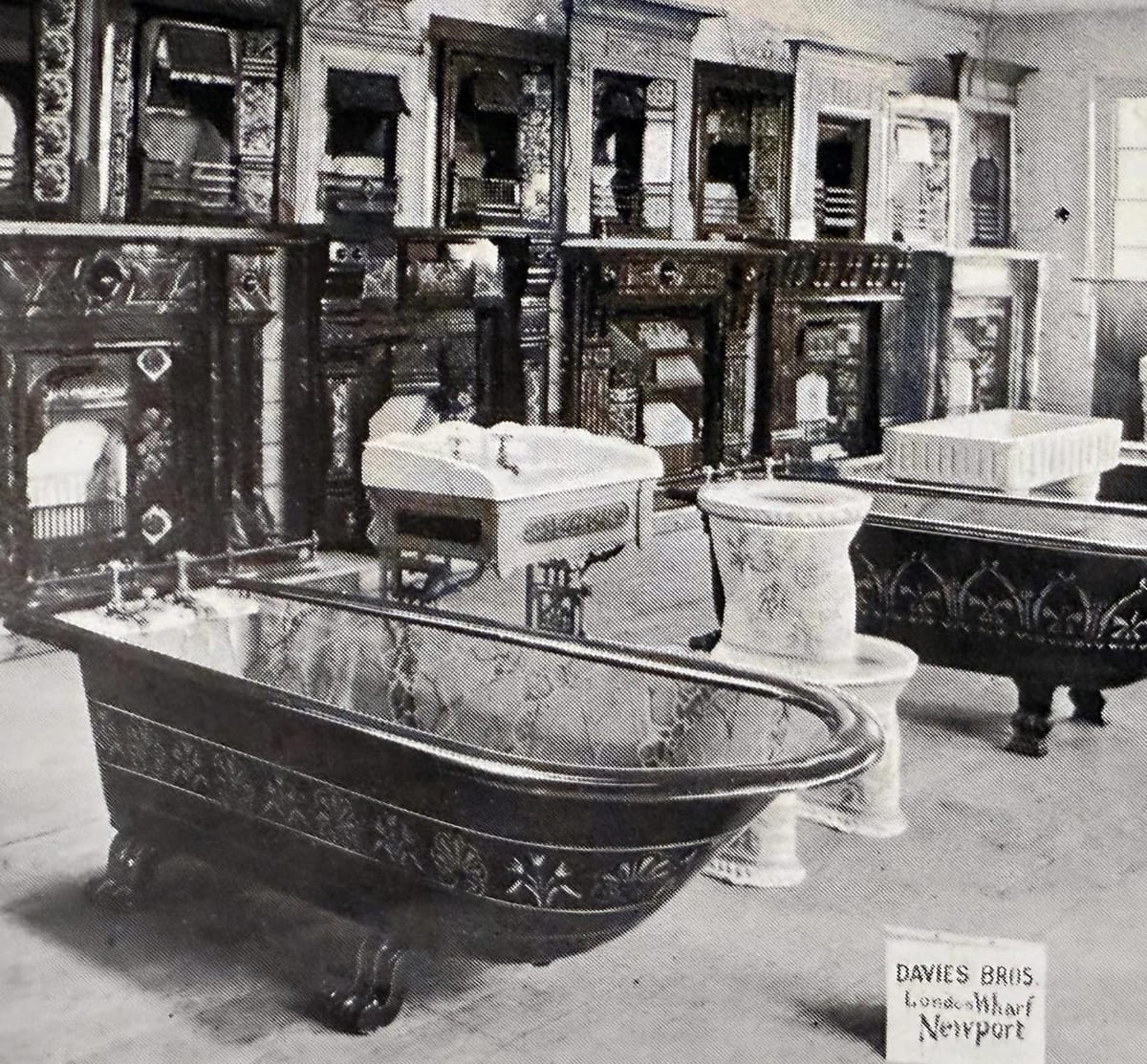
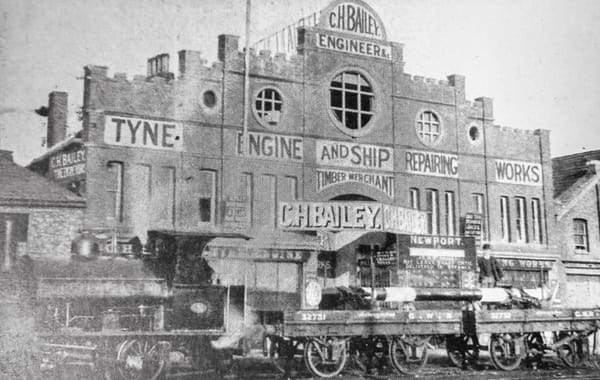
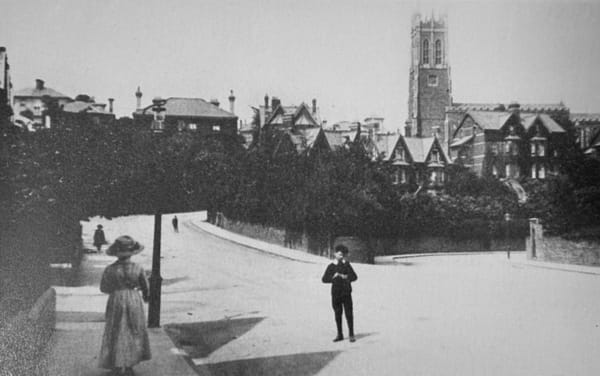
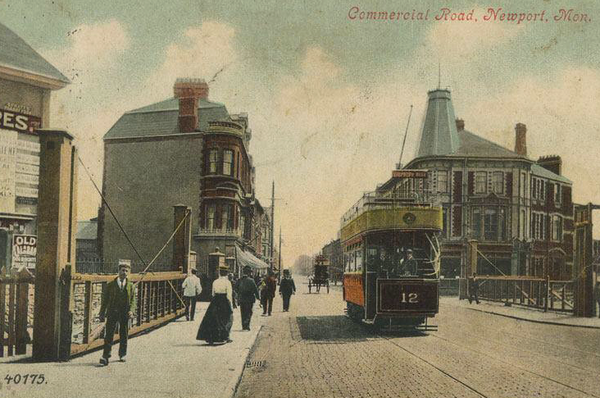
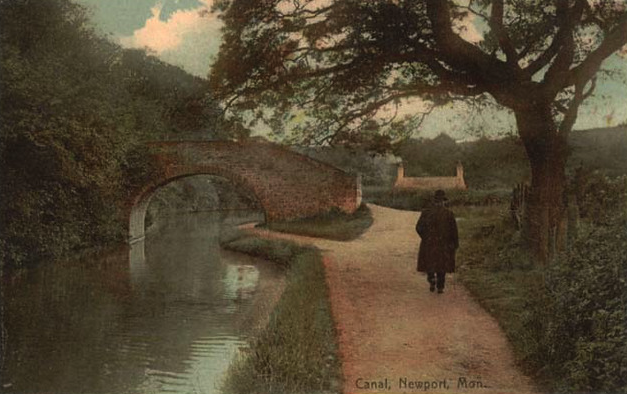

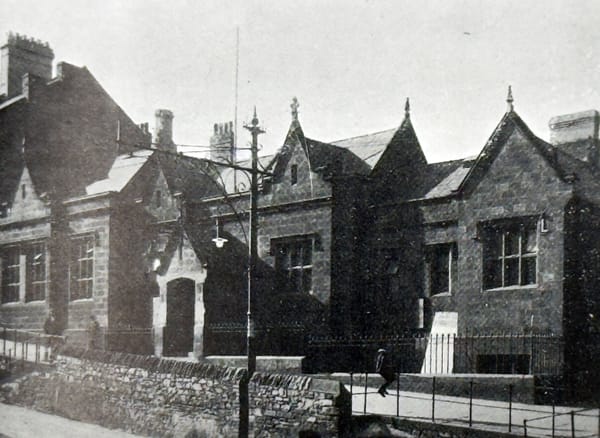
Member discussion